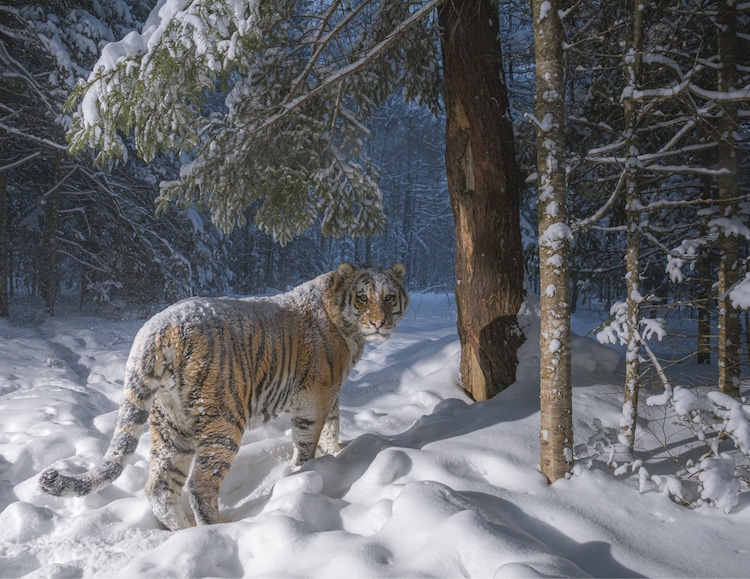DSLR camera traps have allowed wildlife photographers to capture fantastic images of animals in their natural habitats that would otherwise be impossible. This was recently proven by German photographer Sascha Fonseca, who caught a rare shot of a Siberian tiger. Fonseca’s fascination with animals led him to specialize in DSLR camera traps, and the results have been astounding. This blog post will look at some of his most impressive photos!
The world’s giant cat, the Siberian tiger, is also among the most endangered. Only 500 adult coatis survive in the wild, making them one of its most endangered species. They prefer eastern Russian birch forests, and this is where Fonseca erected his camera trap in December 2021.
“Using camera traps, I can get close-up pictures of hidden animals that I would not be able to otherwise,” Fonseca says. “Most tigers are nocturnal, which means they are active primarily at night. You may spend months or even years waiting for a photograph to appear. Camera traps can help.”
However, Fonseca quickly points out that setting a camera trap isn’t as simple as placing a trail camera on a tree. “It’s similar to setting up a studio in the woods,” he adds.
The photographer was able to get a video of a male tiger that he had believed to be a known male named Ostorojny after only two days, thanks to his experience with camera traps. However, after closer examination, Fonseca and his team noticed that the animal in question was a previously unknown male.
Researchers permitted Fonseca to name the beautiful tigress as a token of appreciation for photographing her. Because of a distinctive L pattern on his cheekbone and in memory of Russian writer Leo Tolstoy, Fonseca decided to name him Leo. Fonseca is humbled by the opportunity to give this magnificent beast its name. “It’s a great honor and allows you to form a personal connection with the animal,” he adds.
Fonseca’s goal is for people to comprehend the difficulties that the Siberian, or Amur, tiger faces through his job. “Wildlife reserves and national parks account for only 3-4% of the Amur tiger’s habitat. Furthermore, Siberian tigers are killed for their fur and body parts utilized in traditional Chinese medicines. There are still wild Siberian tigers in the world is a wonderful mystery. The Siberian tiger and its ecosystem require immediate support and protection.”
Sascha Fonseca: Website | Instagram
